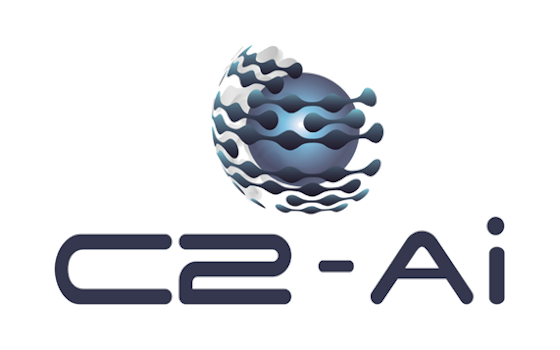 Opinion Article by Dr Mark Ratnarajah, practising paediatrician, UK Managing Director, C2-Ai.
Opinion Article by Dr Mark Ratnarajah, practising paediatrician, UK Managing Director, C2-Ai.NHS waiting lists have remained highly visible in the public eye, especially since the pandemic. With more than seven million people now waiting for elective procedures, media reports have focused on growing numbers month after month.
Addressing the elective recovery challenge has understandably become a national priority, with targets set to reduce long waiters, and commitments made to bring numbers down.
But in a time when healthcare resource is stretched, numbers form only part of the challenge facing NHS professionals.
Finding those in greatest need: the people sometimes hidden in the numbers
An urgency to manage waiting list safely has become imperative for NHS organisations and integrated care systems.More and more are adopting innovative approaches, as they examine how they can bring the waiting list down as expediently as possible, whilst also considering patient safety, and managing the list in a way that minimises avoidable harm and suffering.
Strategies have developed far beyond waiting list validation techniques, such as a numerical cleaning of the list, where duplicates are removed, or where patients are contacted to see if they still want their operation.
Instead, there has been a shift to understanding changing clinical risks for individuals at scale, in order to identify and expedite support to vulnerable high-risk patients on waiting lists, who might otherwise be missed.
Those patients might not necessarily be cancer patients, or people who have been waiting for 74 or even 104 weeks - who might be relatively straightforward to find. Some of the most vulnerable might be waiting for a seemingly routine procedure, but still be at a high risk of decompensating, without appropriate intervention. They might be at risk of developing additional complexity, or even face an increased risk of mortality as they wait, due to the impact of comorbidities or progression of their underlying condition.
There is no average patient
Healthcare systems are introducing new methodologies and technology supported approaches, to help them manage lists based on a simple idea: that there is no average patient.No two patients on a waiting list are the same. Much more than a number, each person waiting has a unique and potentially complex mix of clinical risks, as well as biological, social and psychological needs that might need to be considered.
These factors can be more difficult to measure than time spent on a list, but can be important in determining an individual’s ability to wait well, or highlight their risk of coming to harm if nothing is done to prioritise their needs.
Measuring the dynamic individual need of the patient, and doing so at scale, has consequently become a new requirement in the mission to safely stratify elective lists.
Healthcare providers and systems are, in response, using technology and combining data to gain an increasingly sophisticated understanding of where a culmination of events will take an individual patient in the future.
They are acquiring a means to plot a trajectory and to anticipate the needs of the patient in the near future, in order to mitigate serious consequences or harm for that individual, as well as avoiding additional cost and requirements placed on the health system.
Acting on clinical decision support, working as a system
Trusts and entire ICSs are now deploying clinical decision support to help clinical and operational teams make decisions. But in a constrained system where there is limited resource, including human capital, beds, ICU access, theatre capacity, how can this intelligence be best used?Prioritisation of patients - moving them up the waiting list - might be possible to an extent. But balanced against capacity limitations, system-wide thinking is starting to deliver the biggest impact.
Configuring system wide services to help to de-risk patients, has been one successful approach. This has in part taken the form of targeted and tailored prehabilitation, based on individual patient needs. In other words - understanding what measures can be applied in the community to support a patient as they prepare for surgery, to improve the success of their operation, and to enhance and speed up their recovery. And thinking beyond a single operation - measures to help them manage their chronic condition and support their ongoing wellbeing into the future, to prevent further demand on the system.
Regions can use intelligence to better match demand and supply. This might mean creating surgical hubs in the right locations to manage low complexity, high volume activity. Or it might mean matching supply and demand across a region to individual patient risks - for example moving patients to sites with appropriate additional capacity, and not moving high-risk patients to sites without an emergency department or ICU. It could also mean more judiciously using private capacity - matching patients to the capabilities of those sites.
Genuine patient engagement
Intelligence being generated can also provide patients with more informed, and potentially safer choice.Simply asking a patient if they still want a procedure without an evidence base can place a lot of pressure on an individual. Some might decline their operation because they don’t want to become a burden, or because of a sense of duty. Others might feel apprehension about going into hospital.
But a discussion with those most at risk, can allow informed decisions based on a trajectory of what is likely to happen if an operation does or does not happen, and potentially about the type of procedure they have, such as a lower risk anaesthetic where appropriate.
There is now an opportunity to measure the inflection point at which things go wrong, and to present the best options for patients to mitigate that problem, to monitor and engage patients all the way to the point at which they have their surgery, and to help ICSs deliver on their fundamental mandate of delivering integrated health and care for individuals across their population.